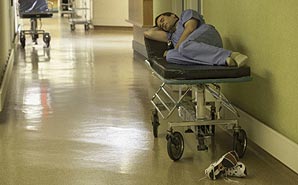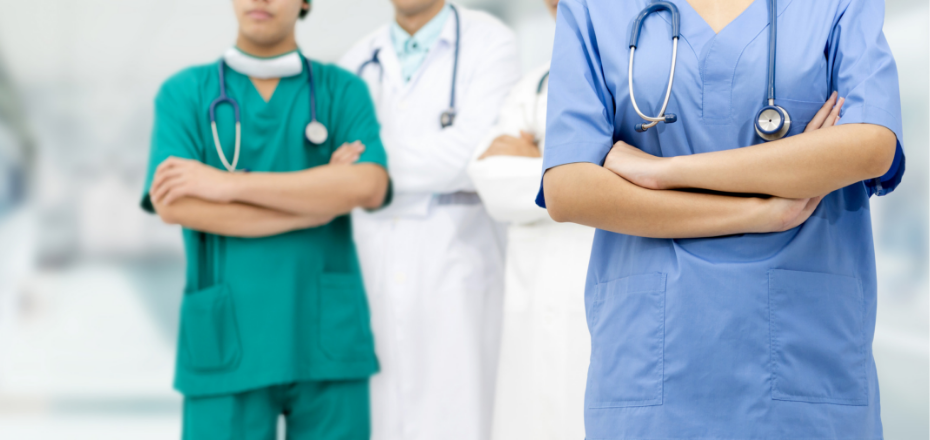How Telehealth Can Benefit Those Affected by a Natural Disaster
Natural disasters can cripple entire communities and the public’s access to medical care. From wildfires to hurricanes, these nightmare scenarios make it nearly impossible for some people to get the medical treatment they need when they’re sick or injured. With roads blocked and the streets flooded, emergency medical personnel may not have the means to reach victims in need. But with the rise of digital technology, remote healthcare services like telehealth can expand a community’s access to care during these turbulent times.
How Telehealth Can Make a Difference During a Natural Disaster
Telehealth provides a range of remote healthcare services using digital technology like laptops, tablets, and smartphones, connecting patients to healthcare providers using live video, audio, and instant messaging. Patients can use telehealth to get access to medical services during and after a natural disaster including prescriptions, treatment, and consultations. In fact, 42.5% of health system clinicians say they use telehealth to fill in gaps in care delivery.
We recently spoke to Mariea Snell, assistant professor and coordinator of the Doctor of Nursing Practice programs at Maryville University and a telehealth clinician at Maven Clinic Inc. Snell provides medical advice all over the United States to patients who don’t have easy access to healthcare, including college students. She also prescribes medication in states that allow telehealth for prescriptive purposes.
When asked about the major benefits of telehealth, Snell said, “Telehealth allows patients to access care, while decreasing certain barriers like transportation issues. During a natural disaster, facilities might be closed, roads are closed, public transportation is down.” She added, “It helps those that need meds or those that have urgent questions and concerns about their health.”
As a leading advocate for telehealth services, Snell talked about some of the most common health concerns among her patients. She mentions issues like treating acute illnesses like a cough, cold or flu and psychiatric issues like anxiety and depression. She mentions there are “Tons of tools to help assess infections, like sore throats and even adaptors that hook up to a phone’s camera that can look into a person’s ear.”
Helping Victims in Rural Areas Find Access to Care
During a natural disaster, people living in rural or poor areas tend to suffer the most, considering many of these communities lack a public health infrastructure. When asked how telehealth can benefit those living in rural areas, Snell added, “Everybody has a smartphone, and all you need is cell service. Usually, that’s something that’s still available during natural disasters. That’s what makes it such an effective option during these dire situations.”
As telehealth continues to grow around the country, studies have shown that Americans living in rural areas tend to benefit the most from telehealth applications, considering 20% of Americans live in rural areas with no access to healthcare.
Professor Snell talked about the real-life example of Missouri. Prior to 2016, the state was suffering from similar infant mortality rates to South Africa. In an attempt to expand the reaches of healthcare services to the state’s isolated rural areas, the governor signed a new telemedicine law allowing a valid physician-patient relationship to be established through telemedicine. The implications were vast and effective. As a result, telehealth provided a viable solution to the issue and infant mortality rates significantly dropped.
The Future of Telehealth
With 74% of consumers saying they are at least open to a virtual health visit, we may see more of the general public using telehealth services during a natural disaster in the future. We asked Professor Snell where she sees the future of telehealth going. She said, “The systems we use will get more and more sophisticated, less costly, and more user-friendly. More patients will have sophisticated assessment equipment in their homes for better chronic disease management.” Ultimately, these new technologies in healthcare are showing us new ways to stay healthy.
As devastating as natural disasters can be, telehealth can provide some relief to those affected by severe storms, floods, and wildfires. As long as patients have access to cell service, they can have a physician remotely assess their health condition and prescribe medication. Treating the victims of a natural disaster continues to be a challenge, but telehealth has the potential to increase the public’s access to care when they need it most.
Ultimately, the future of telehealth and the healthcare system are going to look the same. Telemedicine will serve as our proxy to receiving professional medical care from the comfort of our homes. These are exciting times as our evolution in technology is showing us new ways to live and lead healthier lives.
Sources
https://www.ncbi.nlm.nih.gov/pmc/articles/PMC2875675/
https://newsroom.cisco.com/press-release-content?type=webcontent&articleId=1148539




